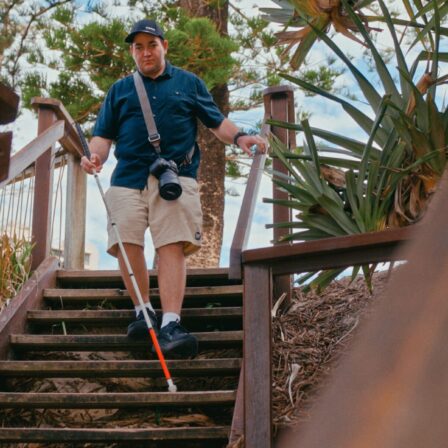News
Keeping pups and dogs safe during wild mushroom season
It’s currently prime time for wild mushrooms in Victoria. Although mushroom season is at its peak throughout the cooler autumn months, they can still be found year-round in parts of the state – so it’s important to stay alert.
When is mushroom season in Victoria?
During the wetter months of autumn when temperatures start to drop, these conditions combined with bursts of sunshine create the perfect environment for wild mushrooms to thrive.
Wild mushrooms thrive from March to June, which means we all need to be on high alert during walks in parks and even in your own backyard when engaging with or toileting a pup.
Are wild mushrooms poisonous to dogs?
While not all wild mushrooms are toxic to dogs, if you see any while you’re out and about, assume they’re poisonous and take their threat seriously.
Be sure to check your yard for mushrooms each year as wild mushrooms can be toxic to dogs. If you can’t check your yard, toilet your pup on-lead until you can check and supervise them while in the yard during mushroom season.
Where do wild mushrooms grow in Victoria?
Mushrooms move quickly and appear to pop up overnight. Some of them can be hard to find or are hiding in plain sight.
Check the following areas for potentially toxic wild mushrooms:
- leafy and wooded areas
- in mulched garden beds
- lawns
- under trees
- nature strips.
Types of toxic wild mushrooms and fungi
The yellow-staining mushroom (Agaricus xanthodermus) and the death cap mushroom (Amanita phalloides) are the most prominent in Victoria and can cause life-threatening symptoms if consumed.
Similar in appearance to field mushrooms and fungi we find in the supermarket, the yellow-staining mushroom is largely found in urban lawns and gardens in big groups.
Death cap mushrooms are the more fatal of the two and are found under oak trees in colours ranging from olive and green to yellow or brown with white ridges underneath the wide ‘cap’.
Other types of toxic mushrooms in Victoria:
- Ghost fungus (Omphalotus nidiformis)
- Shaggy parasol (Chlorophyllum brunneum)
- Earthball (Scleroderma) – commonly mistaken for truffles.
Symptoms of mushroom toxicity in dogs:
- wobbly or staggering steps
- salivating or excessive drooling
- vomiting and diarrhea
- increased or decreased urination
- sleep-like coma
- seizures or fits.
When do symptoms of mushroom toxicity in dogs appear?
The effects can be immediate or may present within three to six hours, in most instances symptoms begin with vomiting and diarrhea. Further, more serious symptoms can progress over three to 14 days.
Do not wait for symptoms to show if you suspect a pup in your care has eaten a potentially toxic mushroom.
What do I do if my dog eats mushrooms from the garden or park?
Firstly, try not to panic. If your dog or puppy has eaten any mushrooms you are concerned about, do not attempt to induce vomiting yourself and immediately contact your vet for assessment and treatment.
Take a photo of any remaining mushrooms you suspect your dog has eaten and show your vet upon arrival.








